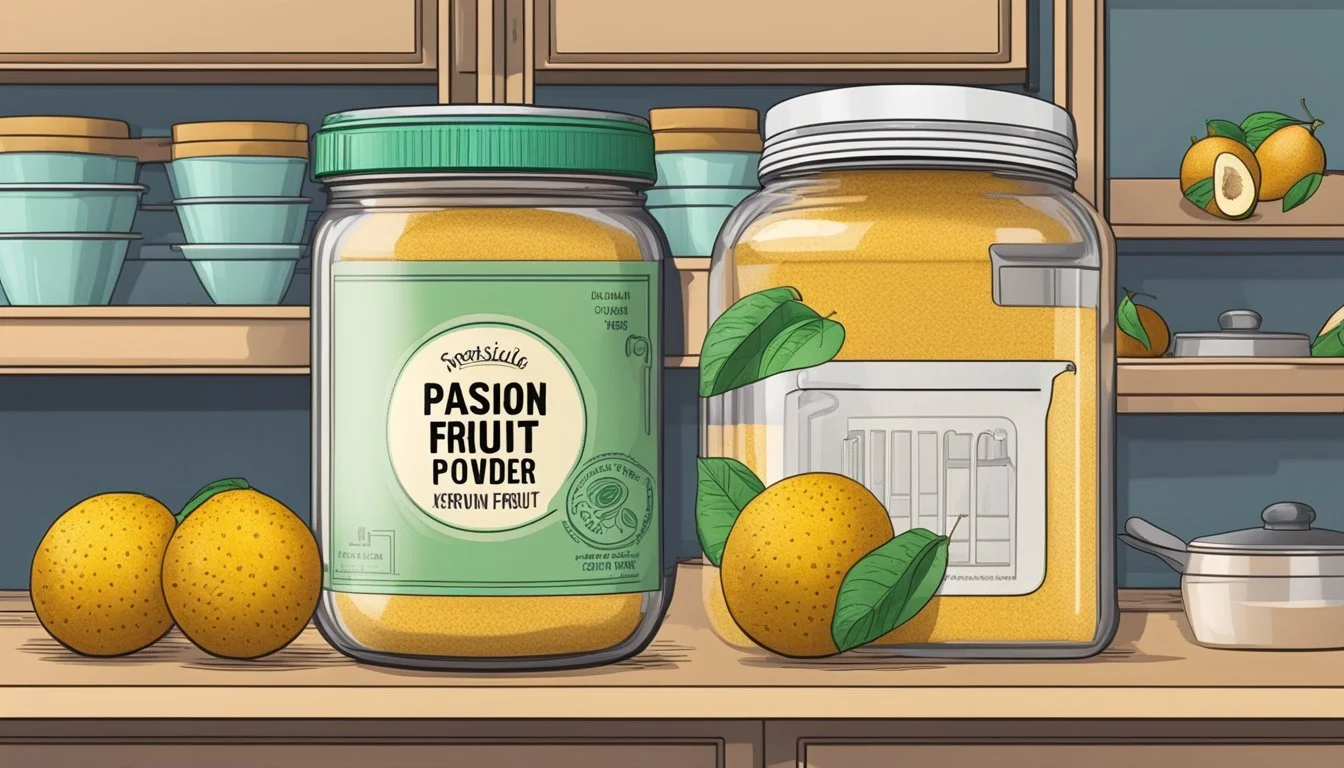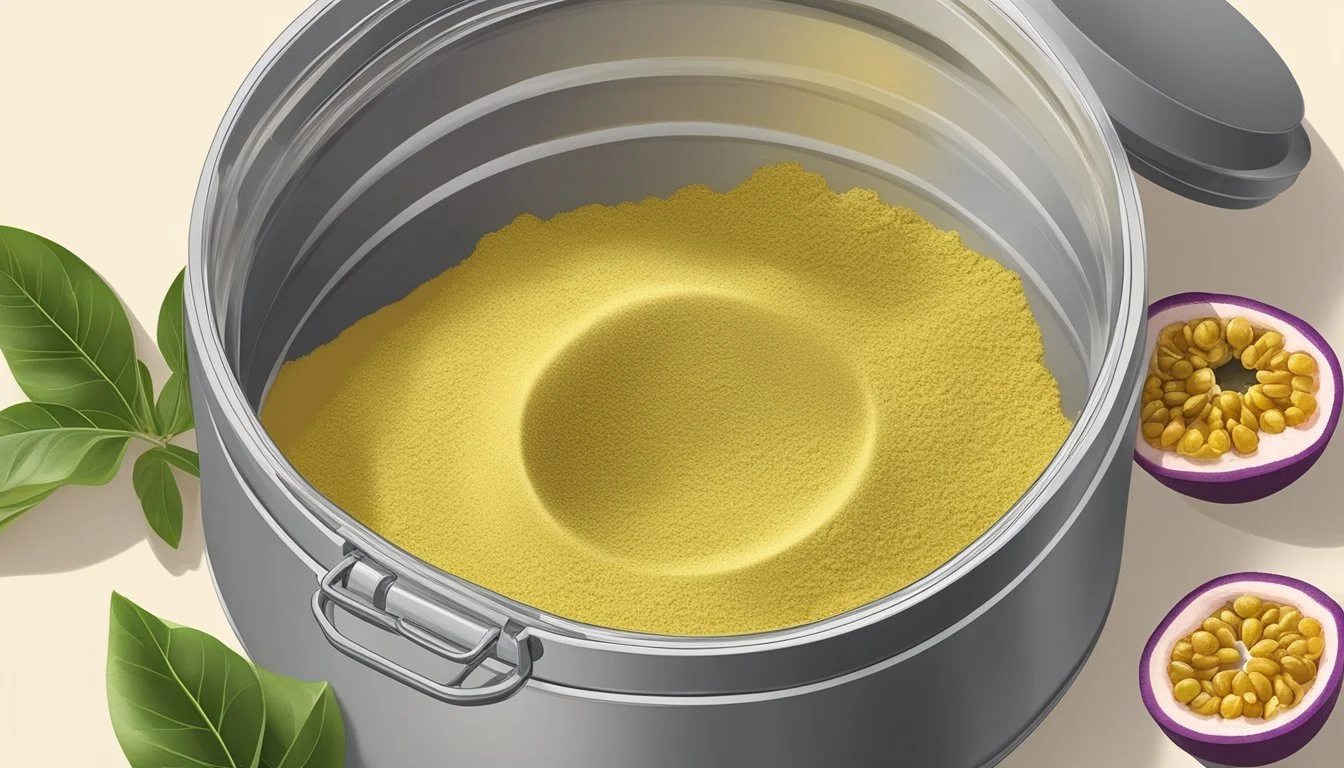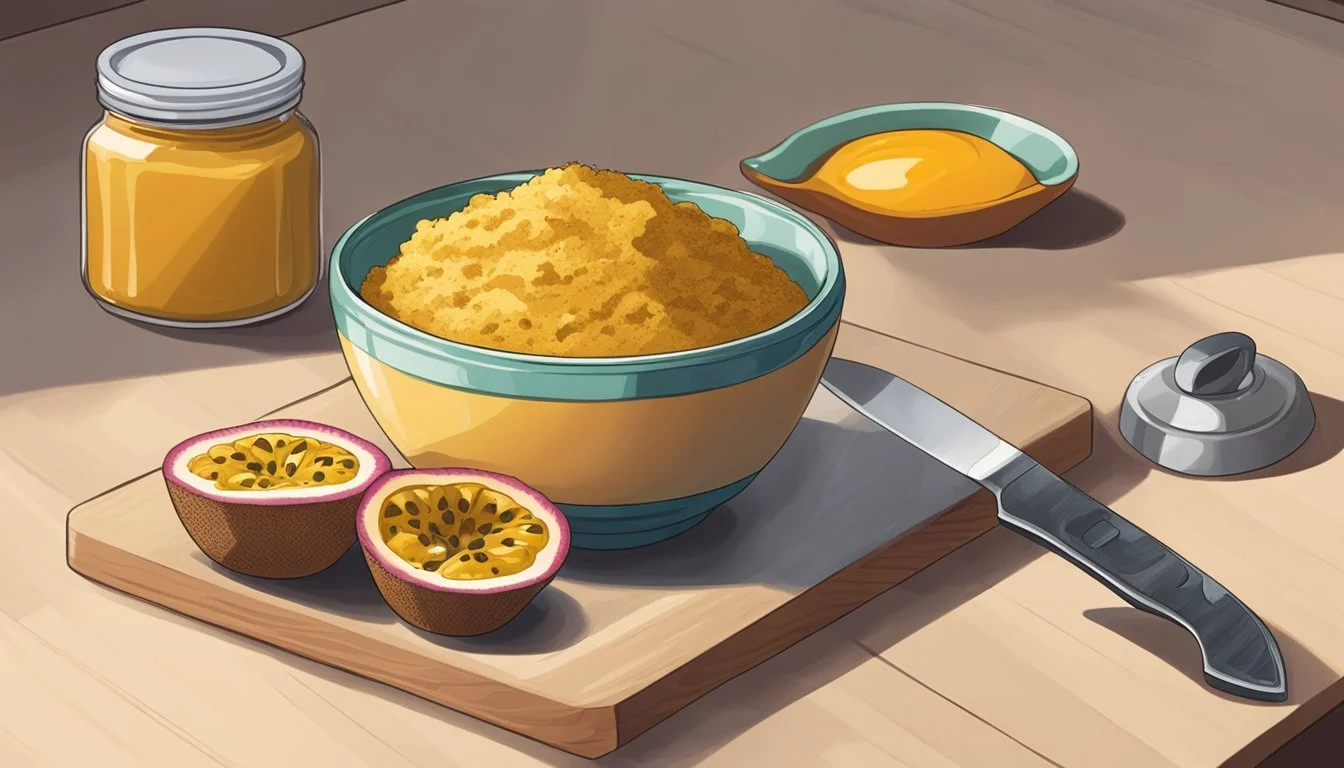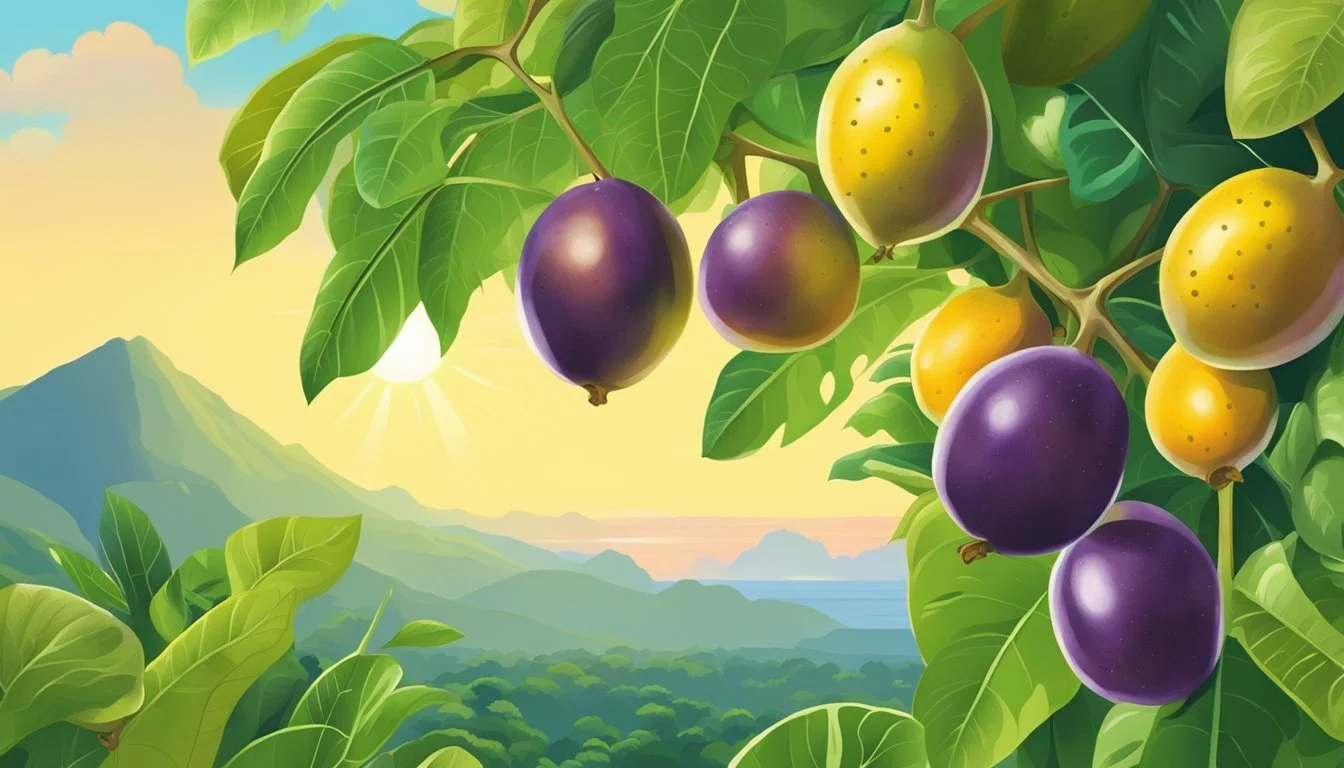How Long Does Passion Fruit Powder Last?
Shelf Life and Storage Tips
Passion fruit (What wine goes well with fruit?) powder offers a concentrated taste of its fresh counterpart and an extended shelf life that makes it convenient for long-term use. The duration for which it retains its quality largely hinges upon the storage conditions. When kept in a cool, dark, and dry place, passion fruit powder can maintain its vibrant flavor and potency for up to two years. Sealed packaging is crucial to prevent moisture and other contaminants from compromising the powder.
The longevity of passion fruit powder is also influenced by its processing method and the addition of any preservatives. Properly processed and packaged, it can be a stable ingredient for culinary applications ranging from baking to beverage-making. While its durability exceeds that of fresh passion fruit pulp, it is still subject to degradation over time and can lose its punch if exposed to adverse conditions like high humidity or direct sunlight.
Understanding Passion Fruit
The passion fruit, distinguishable by its ripe, colorful appearance, is a nutrient-dense tropical fruit known for its vibrant taste and remarkable health benefits.
Varieties of Passion Fruit
There are primarily two types of passion fruit that are widely consumed:
Purple Passion Fruit (Passiflora edulis): This variety is smaller but sweeter and is commonly found in subtropical regions.
Yellow Passion Fruit (Passiflora edulis f. flavicarpa): Larger and somewhat more acidic, this kind is grown in tropical regions.
Nutritional Profile
A single passion fruit contains a rich array of vitamins and minerals. Here are some key nutritional highlights:
Vitamins: High in Vitamin C and Vitamin A, essential for immune function and vision.
Fiber: Approximately 2 grams per fruit, contributing to digestive health.
Minerals: Contains potassium, which can help regulate blood pressure, and iron, important for blood health.
Antioxidant Property: The fruit's deep purple color indicates the presence of antioxidants, which combat free radicals.
Calories: Low in calories, making it a healthy addition to any diet.
This nutritional content underscores why passion fruit is valued not only for its flavor but also for its contribution to a healthy diet.
Proper Storage Techniques
Storing passion fruit powder correctly is crucial for maintaining its freshness and flavor. The powder should be kept away from moisture, heat, and light to extend its shelf life.
Room Temperature Storage
Passion fruit powder is best kept at room temperature in a cool, dry place. An airtight container is essential to prevent exposure to moisture, which can lead to clumping and potential spoilage. A pantry or a cupboard away from heat sources or direct sunlight provides the ideal conditions for storage.
Refrigeration
For a longer shelf life, one can store passion fruit powder in the fridge. ensure it's enclosed in an airtight container to keep out moisture and odors from other foods. Refrigeration is particularly recommended in humid or warmer climates where room temperature conditions may not be optimal.
Freezing Passion Fruit
Although less common for powders, freezing passion fruit powder is an option for extended preservation. Keep the powder in a freezer bag or an airtight container suited for freezing. To use small amounts as needed, one could portion the powder into ice cube trays, then transfer the frozen cubes to a freezer bag for convenient use without defrosting the entire amount.
Shelf Life of Passion Fruit
Understanding the shelf life of passion fruit is crucial to maximizing its quality and edibility. Storage method and the ripeness of the fruit are key factors determining how long passion fruit will last before it goes bad.
Fresh Passion Fruit Shelf Life
Passion fruit, when fresh and stored at room temperature, typically lasts from 10 to 15 days provided that it is ripe when acquired. A ripe passion fruit should have a slightly wrinkled skin and feel heavy for its size. These wrinkles are normal and indicate ripeness, not deterioration. It's important to keep them away from direct sunlight and excessive heat to prevent overripening.
Refrigerated Passion Fruit Shelf Life
If passion fruit is refrigerated, its shelf life extends up to 30 days. Storing passion fruit in the fridge slows down the ripening process, thus preserving its freshness for a longer period. They should be kept in a plastic bag or an airtight container to retain their moisture and prevent the build-up of mold.
Frozen Passion Fruit Shelf Life
When passion fruit is stored in the freezer, it can maintain its quality for up to six months. To freeze passion fruit, one should first ensure the fruit is fully ripe, then wash it, dry thoroughly, and place it in a freezer-safe bag or container. This prevents freezer burn and maintains the integrity of the fruit's flavor and texture.
Signs of Spoilage
When assessing passion fruit powder for spoilage, one must pay attention to a few key indicators which typically denote that the product is no longer suitable for consumption.
Color: The powder should retain its vibrant, typically deep yellow-orange hue. Any discoloration or dullness could suggest spoilage or exposure to moisture.
Texture: Fresh passion fruit powder is characterized by its fine, free-flowing consistency. Clumping or caking indicates that it has absorbed moisture, which could lead to mold growth.
Smell: Any off or sour odors are a reliable sign that the passion fruit powder has gone bad, as the product should exhibit a fruity and sweet aroma if it is still good.
In the table below, various signs of spoilage are outlined systematically:
Indicator Fresh Quality Spoiled Quality Color Vibrant yellow-orange Dull or discolored Texture Fine and free-flowing Clumpy or caked Smell Fruity and sweet Off or sour odors Mold Presence None Visible signs of mold or mildew
Consumers should also consider the storage conditions of their passion fruit powder as they can significantly impact its shelf life. The powder should be kept in a cool, dry place, and if it appears to be overripe or exhibits any signs of mold, it should be discarded immediately. Wrinkles are not typically a concern for powders as they are for the whole fruit, but any changes in the expected appearance of the powder can be a cause for concern.
Passion Fruit Preparation and Usage
Understanding the correct methods of preparing passion fruit ensures optimal flavor and utilization. The preparation process typically begins with the fresh fruit and can lead to various forms, including juice and puree, which are essential for both culinary and beverage applications.
Preparing Fresh Passion Fruit
When one begins with fresh passion fruit, the first step is generally to cut the fruit. One should use a sharp knife to slice the passion fruit in half. The interior contains the edible seeds and pulp. Using a spoon, one can easily scoop out the pulp. This fresh passion fruit pulp can be eaten as is, or it can be added to recipes like fruit salads to impart a vibrant, sweet, and tangy flavor.
Creating Passion Fruit Puree
To create passion fruit puree, one should first separate the pulp from fresh passion fruit by scooping it out with a spoon. One can then transfer the pulp into a blender. A gentle pulse blend is enough to loosen seeds from the pulp. Using a sieve, one can strain the seedless pulp, resulting in a smooth passion fruit puree. This puree can be utilized in a variety of culinary applications, from flavoring smoothies to enhancing salad dressings, and it can be a key ingredient in tropical-flavored recipes. It can also be incorporated into beverages, offering a distinctive sweet-tart taste characteristic of passion fruit juice.
Passion Fruit in Culinary Applications
Passion fruit's vibrant flavor lends itself to sweetening and enhancing a variety of culinary delights, from confections to creative drink concoctions. It is a versatile ingredient that can elevate the taste of desserts and beverages with its distinctive tropical tang.
Desserts and Baked Goods
Passion fruit is a popular ingredient in dessert recipes due to its intense, sweet-tart flavor. It pairs exceptionally well with:
Sugar: To create jams or syrups, passion fruit pulp is often simmered with sugar, which can be drizzled over desserts or stirred into homemade custards.
Butter and Eggs: These are the foundation for making a rich passion fruit curd, which can be used as a filling for pastries, a topping for desserts, or swirled into icings.
Examples of passion fruit in desserts include:
Cakes and tarts: where its syrup is brushed on for moisture and flavor.
Icings: providing a tropical twist to classic frostings.
Beverages and Cocktails
In the realm of beverages, passion fruit elevates both non-alcoholic and alcoholic drinks with its robust flavor. Applications include:
Cocktails: A splash of passion fruit juice or syrup adds a flavorful kick to martinis, mojitos, and tropical-inspired drinks.
Smoothies: For a refreshing and healthy option, passion fruit's pulp blends perfectly into smoothies, complementing the flavors of other fruits (What wine goes well with fruits?).
In conclusion, water or other liquids can dilute passion fruit's strong flavor to suit individual tastes, whether it's in a hearty salad dressing or a zesty cocktail. Its bold taste ensures that it remains a standout amongst even the most diverse and delicious ingredients.
Extending Passion Fruit's Shelf Life
To maximize the longevity of passion fruit, one can employ preservation methods such as adding sugar and utilizing freezing techniques, or by transforming the fruit into preserves.
Using Sugar and Freezing Techniques
By adding sugar to passion fruit, one can create a syrup that not only sweetens but also extends the shelf life of the fruit. For homemade syrup, a combination of sugar and water in equal parts is recommended. When stored in the freezer, the life span of passion fruit extends significantly, with frozen passion fruit or its pulp able to last up to six months. This is particularly useful for individuals looking to enjoy passion fruit off-season or use it later in smoothies and other cold beverages.
Freezing steps:
Scoop out the passion fruit pulp.
Mix with an equal amount of sugar until well combined.
Transfer to an airtight container, leaving some headspace to allow for expansion.
Seal and freeze.
It's critical to store passion fruit at the right temperature. At room temperature, it generally lasts between 10 and 15 days once ripe. However, to extend this period, frozen passion fruit serves as a practical alternative.
Making Passion Fruit Preserves
Passion fruit can also be preserved as jelly or preserves. This method involves cooking the passion fruit pulp with sugar and water, and then canning it for long-term storage. Preserves have a generous lifespan and can usually remain consumable for up to a year when stored in a cool, dark place. This option allows for the enjoyment of passion fruit's tropical flavor throughout the year in various forms, such as spreads on toast or as a sweet addition to desserts.
Preserves preparation:
Puree passion fruit pulp in a blender to desired consistency.
Mix with sugar (and pectin if needed) in a pot and bring to a boil.
Continue to cook until the mixture reaches the correct thickness.
Transfer to sterilized jars while hot, seal, and store.
Being knowledgeable about how to store passion fruit properly ensures that it maintains its unique flavor and nutritional benefits for as long as possible. Whether one opts to freeze it with sugar or turn it into sweet preserves, these methods are highly effective in extending the shelf life of passion fruit.
Harvesting and Seasonality
When harvesting passion fruit (Passiflora edulis), identifying ripe fruits is crucial. Typically, the skin of the ripe fruit turns from green to a dark purple or deep yellow or orange, depending on the variety. These color changes indicate that the fruits are ready for harvest. In tropical and subtropical climates, passion fruit tends to flourish.
The peak season for passion fruit is generally during the summer months, although they can grow throughout the year in the most ideal conditions. Timing for harvesting is essential because the fruit's sweetness and taste intensify when allowed to ripen on the vine until the skin begins to wrinkle.
Fruits akin to passion fruit, such as bananas, mangoes, and peaches, share a similar harvest seasonality in these warm climates. Gardeners and commercial growers alike watch for the telltale signs of a glossy skin becoming dimpled and a little softer to touch—signs of a ripe, ready-to-eat fruit.
After harvesting, passion fruits may be kept on the counter to ripen further, which is especially useful if they need to be converted into powder for extended storage. In terms of longevity, passion fruit powder can maintain its optimal quality for months, provided it is stored correctly in a cool, dry place, and away from direct sunlight.
To summarize the key points for better readability:
Look for a color shift to dark purple, yellow, or orange.
Harvest occurs mainly in summer in tropical and subtropical regions.
Fruits should be plucked when the skin begins to wrinkle.
Passion fruit can grow year-round under ideal conditions.
Like bananas, mangoes, and peaches, passion fruit is best when ripened on the plant.










